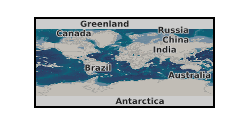Bacterial diversity (16S rRNA gene) in participant collected household vacuum dust from homes across two bioclimatic regions (UK and Greece), with associated participant questionnaire and trace element data. (NERC Grant NE/T004401/1)
The <250um fraction of 28 household vacuum dust samples were extracted using high throughput isolation of microbial genomic DNA (21 samples from a national campaign within the UK and 7 samples from Greece, providing samples from two contrasting bioclimatic zones). Both positive and negative reagent controls were included to ensure sterility throughout the processing and sequencing steps, and a randomly selected sample was run in triplicate (DSUK179). These data (raw fastq files: Target_gene 16S and Target_subfragment V4) are available from the European Nucleotide Archive via the study accession PRJEB46920 with individual sample accession numbers ERX6130460 to ERX6130493; https://www.ebi.ac.uk/ena/browser/view/PRJEB46920). A wide range of anthropogenic factors are likely to affect the indoor microbiome and to capture some of this heterogeneity participants were asked to complete a questionnaire. In addition, trace element data were generated using an X-Ray fluorescence spectrometry on the <250um sieved fraction of the household vacuum dust. Sample location data are provided at town/city, Country level. Indoor dust serves as a reservoir for environmental exposure to microbial communities, many of which are benign, some are beneficial, whilst some exhibit pathogenicity. Whilst non-occupational exposure to a range of trace elements and organic contaminants in house dust are a known risk factor for a range of diseases and poor health outcomes, we know far less about the microbial communities associated with our indoor home environments, and their interaction/impacts on human health. Our knowledge of indoor residential bacterial biodiversity, biogeography and their associated drivers are still poorly understood. The data were collected to improve our understanding of the home microbiome.

non geographic dataset
:
http://data.bgs.ac.uk/id/dataHolding/13607840
English
Geoscientific information
GEMET - INSPIRE themes, version 1.0:
BGS Thesaurus of Geosciences:
Dust
NGDC Deposited Data
Bacteria
Trace elements
Free:
Free:
NERC_DDC
creation: 2021-11-01
2019-10-01
-
2021-07-01
Northumbria University
Jane Entwistle
Department of Geography and Environmental Sciences, Ellison Building,
Newcastle upon Tyne,
NE1 8ST
email:
not available
Role: originator
Northumbria University
Jane Entwistle
Department of Geography and Environmental Sciences, Ellison Building,
Newcastle upon Tyne,
NE1 8ST
email:
not available
Role: principal investigator
British Geological Survey
Enquiries
email:
not available
Role: distributor
British Geological Survey
Enquiries
email:
not available
Role: point of contact
Data Quality
: High throughput isolation of microbial genomic DNA from each <250 um dust sample was performed using a DNeasy 96 PowerSoil Pro Kit (384) (QIAGEN). DNA samples were stored at -20 °C until sequencing. Taxonomic investigation of bacteria was performed via paired-end sequencing of the V4 hypervariable region of the 16S rRNA gene using an Illumina MiSeq 250 x 2 chemistry approach. Energy-dispersive X-ray spectrometry, on a pressed pelleted of the <250um fraction, was used for elemental data. Standard Reference Materials were assessed, and an in-house calibration factor was utilised to optimise instrument performance.
INSPIRE Implementing rules laying down technical arrangements for the interoperability and harmonisation of Geology
Commission Regulation (EU) No 1089/2010 of 23 November 2010 implementing Directive 2007/2/EC of the European Parliament and of the Council as regards interoperability of spatial data sets and services
Constraints
The copyright of materials derived from the British Geological Survey's work is vested in the Natural Environment Research Council [NERC]. No part of this work may be reproduced or transmitted in any form or by any means, or stored in a retrieval system of any nature, without the prior permission of the copyright holder, via the BGS Intellectual Property Rights Manager. Use by customers of information provided by the BGS, is at the customer's own risk. In view of the disparate sources of information at BGS's disposal, including such material donated to BGS, that BGS accepts in good faith as being accurate, the Natural Environment Research Council (NERC) gives no warranty, expressed or implied, as to the quality or accuracy of the information supplied, or to the information's suitability for any use. NERC/BGS accepts no liability whatever in respect of loss, damage, injury or other occurence however caused.
Available under the Open Government Licence subject to the following acknowledgement accompanying the reproduced NERC materials "Contains NERC materials ©NERC [year]"
licenceOGL
Metadata about metadata
d0869679-6d34-14ce-e054-002128a47908
British Geological Survey
Environmental Science Centre,Keyworth,
NOTTINGHAM,
NG12 5GG,
United Kingdom
tel: +44 115 936 3100
email:
enquiries@bgs.ac.uk
Role: point of contact
2024-04-24
